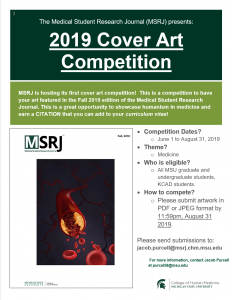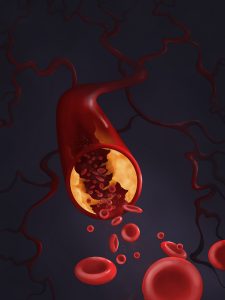
2018-2019 MSRJ Editorial Staff
Visit another recent post to meet our Executive Editorial Board: http://msrj.chm.msu.edu/2018-2019-msrj-executive-editorial-board/
Senior Editors
Olivia Hudson- Olivia is a 4th year medical student serving as Senior Editor for the MSRJ. She is originally from Okemos, MI. She studied Human Biology at Michigan State University and played club lacrosse prior to medical school. She is interested in pursuing a career Interventional Cardiology. In her spare time, she enjoys biking, cooking and competitive sports.
James Parkkonen is a 4th year medical student serving as Senior Editor for the MSRJ. He hails from Negaunee, MI and majored in Psychology and Criminal Justice at the University of Michigan. He is a future Emergency Medicine physician whose hobbies include basketball, sitcoms, reading and kittens.
Aidan Tan is a 5th year medical student studying at the University of New South Wales and serving as a Senior Editor for the MSRJ.
Daniel Havlichek- Dan is a 4th year student at MSU-CHM serving MSRJ as a senior editor. He is an alumnus of the University of Michigan with a degree in microbiology. Career interests include Gastroenterology and general internal medicine. He is still seeking the perfect chicken tikka masala recipe.
Meghan Hill – Meghan is a 4th year medical student serving as Senior Editor for MSRJ. She is from Caledon, Ontario and received her Bachelors in Pharmacology at McGill University in Montreal, Quebec prior to starting medical school at MSU CHM. She is pursuing a career in Internal Medicine with potential specialization in Pulmonology and Critical Care.
Larissa Georgeon is a 4th year medical student at Michigan State University College of Human Medicine. She received her B.A. in Biology from Clark University and her M.P.H. in Epidemiology from Texas A&M University. Prior to medical school, she was an Epidemiological Fellow at the Centers for Disease Control and Prevention (CDC) in Atlanta, GA. She is interested in Global Health and has gained international experience through her public health internship in Mumbai, India and volunteering at a rural clinic in Surin, Thailand. Her passion is to pursue a career in women’s health and help alleviate domestic and global health disparities.
Francesca Cazzulino is a 4th year medical student serving as a Senior Editor for MSRJ. She is from Pasadena, CA and received her Bachelors of the Arts in Biology from Oberlin College and a Masters in Public Health in Epidemiology from UCLA Fielding School of Public Health. She is interested in pursuing a career in Internal Medicine.
Junior Editors
Maria Rich – Maria is a 2nd year medical student at Michigan State University College of Human Medicine. She grew up in Grand Rapids, Michigan and received her B.A. in Biology from Kalamazoo College where she enjoyed studying abroad in Quito, Ecuador and playing varsity soccer. Prior to starting medical school, she worked as a Clinical Research Coordinator with the BeatCC Pediatric Oncology Research Team. At this point in her medical education, she is excited about pediatrics, genetics, and palliative care.
Ninette Musili – Ninette is a 2nd year medical student at Michigan State College of Human Medicine. She grew up in Ann Arbor, Michigan and attended the University of Michigan for a Bachelor of Science in Biomolecular Science. She is strongly interested in Global Health disparities and how they affect women and children healthcare. At this point in her education she has a strong interest in Surgery and Obstetrics/Gynecology.
Mutinta Chisowa- Mutinta is a 3rd year medical student Michigan State University College of Human Medicine. She grew up in Kalamazoo, Michigan and attended Oakwood University and recieved a B.S in Biology. She is interested in pursuing Emergency Medicine.
Baiju Patel – Baiju is a 3rd year medical student at Michigan State University College of Human Medicine. I grew up in Macomb, Michigan after arriving from India when I was a child. Attended Wayne State University and received BA in Biology. At this point in my education I have an interest to various fields ranging from Pediatrics, Psych, Neuro and Emergency Medicine.
Maddie Hulse – Maddie is a 3rd year medical student at Michigan State University College of Human Medicine. She grew up in East Lansing, Michigan and attended the University of Michigan and received a BS in Molecular and Cellular Biology. She is interested in pursuing a career in Internal Medicine or Family Medicine.
Emma Herrman – Emma is a 3rd year medical student at Michigan State University College of Human Medicine. She grew up in Shelby Twp,. MI and attended the University of Michigan, receiving a BS in biomolecular science with a minor in sociocultural anthropology. She is unsure what area of medicine she wants to pursue at this point, but is interested in emergency medicine, pediatrics and heme/onc.
Caitlin McCarthy – Caitlin is a 3rd year medical student at Michigan State University College of Human Medicine. She received her Bachelor of Arts in Chemistry and Psychology in 2013 from Kalamazoo College. After college graduation, she taught high school chemistry at University Prep High School in Detroit for three years. Outside of medical school, Caitlin is a registered yoga teacher and teaches vinyasa weekly at a studio in Grand Rapids. Her professional interests include preventive health, public and community health, women’s health, and education. She hopes to ultimately go into a field of medicine that affords her opportunities in advocacy, continuity of care, and meaningful relationships with patients.
Megan Kechner – Megan is a 3rd year medical student at Michigan State University College of Human Medicine. She received her Bachelor of Science in Neuroscience and Psychology in 2015 from Michigan State University. Her past research experience includes the study of molecular mechanisms underlying neuropsychiatric disorders such as depression and addiction. She has also conducted research at Vanderbilt University exploring the genetic variation in the human dopamine transporter gene and its role in Attention Deficit Hyperactivity Disorder. At CHM, Megan is currently using a pre- and post-test model to assess outcomes of the ThinkFirst injury prevention program. She is spending her clinical years in Flint, MI and is in the Medical Partners in Public Health Certificate program. Her professional interests include injury prevention, mental health, public health, and academic medicine. Ultimately, she is interested in pursuing a career in pediatrics, PM&R, or neurology.
Danielle Sethi – Danielle is a 3rd year medical student at Michigan State University College of Human Medicine. She received her Bachelor of Science in Architecture in 2012 from University of Michigan and her Master of Science in Physiology and Biophysics in 2014 from Georgetown University. After graduate school, she helped implement and manage the scribe program at the University of Michigan. She is in Flint, MI for her clinical years and she is in the Public Health Certificate program. Her professional interests include women’s health, public health, infectious diseases, and global medicine. She is interested in pursuing a career in Surgery or Emergency Medicine.




